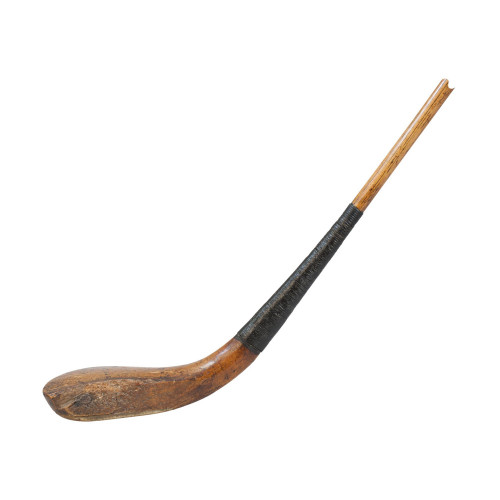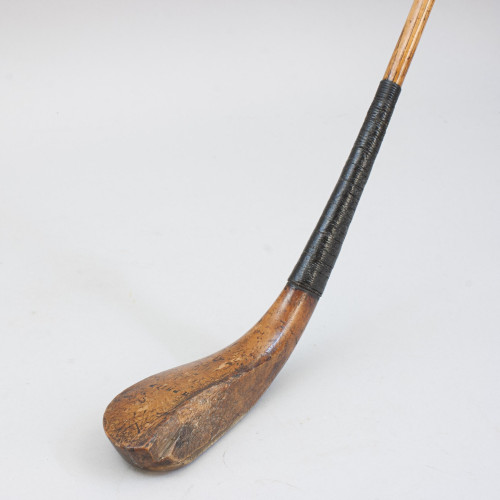- Home
- Artists & Makers
- Hugh Philp
Hugh Philp

1786 - 1856
Hugh Philp: The Master Clubmaker of St Andrews
Hugh Philp is widely regarded as the greatest golf clubmaker of all time. Based in St Andrews, Scotland, he originally ran a joinery and house carpentry business. As a sideline, he began repairing clubs for local golfers - a service that quickly grew in demand due to his exceptional craftsmanship. This success led him to begin making clubs of his own.
In 1819, Philp was appointed the official clubmaker to the Society of Golfers at St Andrews, an organisation that would later become the Royal and Ancient Golf Club of St Andrews. His reputation soon soared, and he became recognised as the finest clubmaker of his era. His clubs were held in such high esteem that forgeries were produced even during his lifetime, following the theft of a couple of his original name stamps.
Philp's first assistant, James Wilson, worked alongside him for 23 years until 1852. That same year, Philp hired his nephew by marriage, Robert Forgan, and began training him in the art of clubmaking. Upon Philp's death in 1856, Forgan inherited the business and carried on his legacy.
In 1899 Robert Forgan, Hugh Philp's nephew and the successor to Philp's business and one of two former assistants wrote to the editor of GOLF.
Hugh Philp died April 6th, 1865, in his seventy-forth year. He served no apprenticeship to club-making, but was bred to the trade of joiner and house carpenter. He carried on that business in Argyle Street, St Andrews; and as there were
Hugh Philp: The Master Clubmaker of St Andrews
Hugh Philp is widely regarded as the greatest golf clubmaker of all time. Based in St Andrews, Scotland, he originally ran a joinery and house carpentry business. As a sideline, he began repairing clubs for local golfers - a service that quickly grew in demand due to his exceptional craftsmanship. This success led him to begin making clubs of his own.
In 1819, Philp was appointed the official clubmaker to the Society of Golfers at St Andrews, an organisation that would later become the Royal and Ancient Golf Club of St Andrews. His reputation soon soared, and he became recognised as the finest clubmaker of his era. His clubs were held in such high esteem that forgeries were produced even during his lifetime, following the theft of a couple of his original name stamps.
Philp's first assistant, James Wilson, worked alongside him for 23 years until 1852. That same year, Philp hired his nephew by marriage, Robert Forgan, and began training him in the art of clubmaking. Upon Philp's death in 1856, Forgan inherited the business and carried on his legacy.
In 1899 Robert Forgan, Hugh Philp's nephew and the successor to Philp's business and one of two former assistants wrote to the editor of GOLF.
Hugh Philp died April 6th, 1865, in his seventy-forth year. He served no apprenticeship to club-making, but was bred to the trade of joiner and house carpenter. He carried on that business in Argyle Street, St Andrews; and as there were
no club makers in St Andrews at that time, the golfers began to take their clubs to him to be repaired; and after a time they got him to come down to the links where he had a shop where the Grand Hotel is now built. That would be somewhere between 1820 and 1825 (during September of 1819 Philp was appointed official clubmaker to the Society of Golfers at St Andrews). Some few years after that he bought the property now occupied by Tom Morris, where he died in 1856. I don't know where he was born, nor how long he made clubs, but I have heard him say that he made them for over fifty years. I was his assistant when he died - his former assistant having left him in 1852 and opened a club maker's shop on the ground where the Marine Hotel is now built. His name was James Wilson, and was twenty-three years Mr. Philp's assistant. Andrew Strath was also an apprentice to Philp. I was four years Mr. Philp's assistant, and I succeeded to the business which is now carried on under the name of R. Forgan & Son.
1 ITEM
Please create wishlist to add this item to


